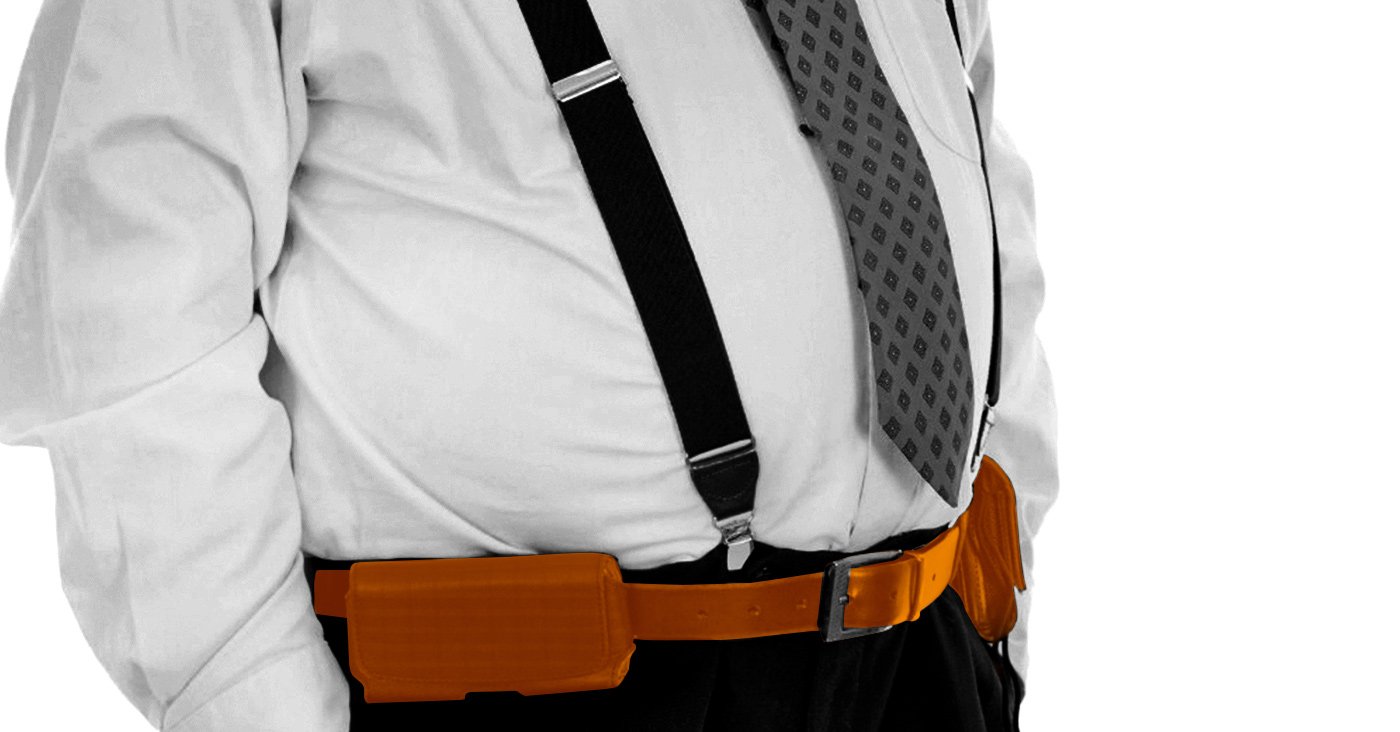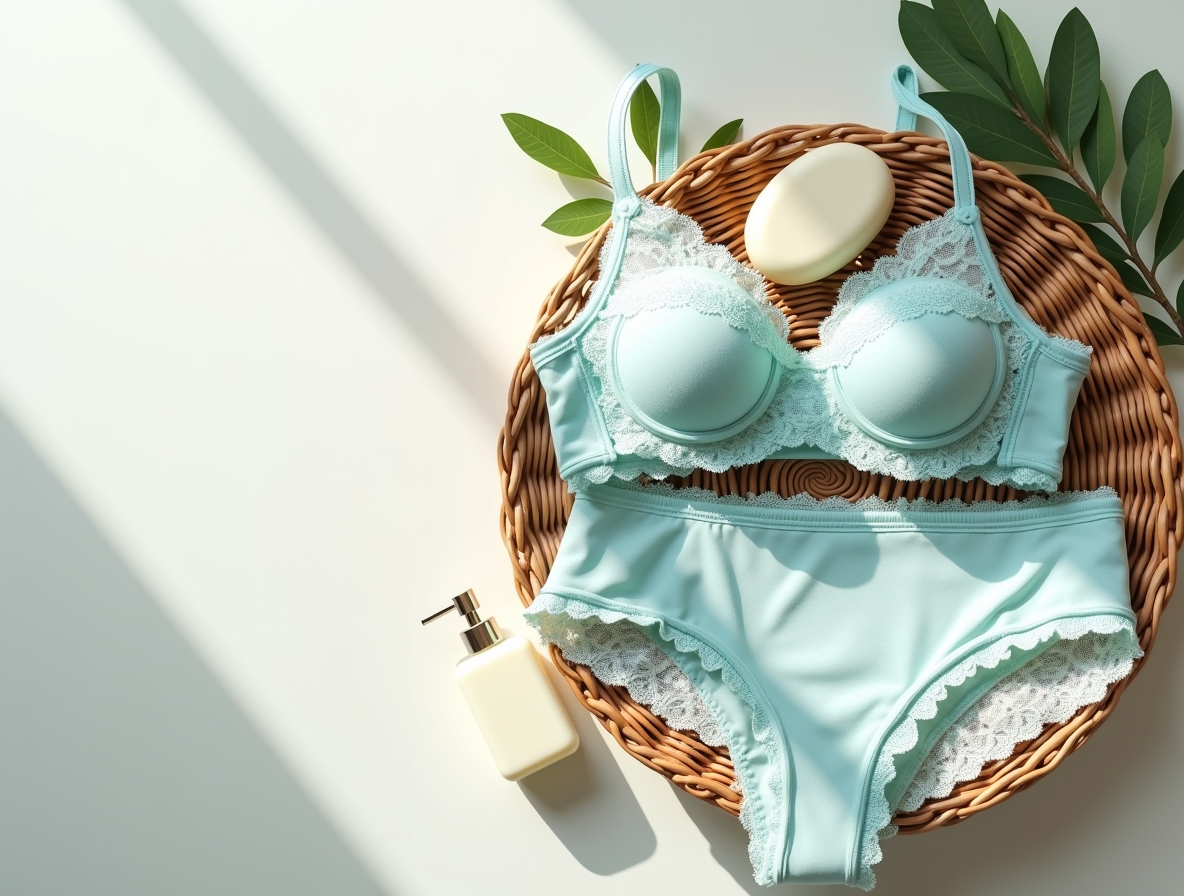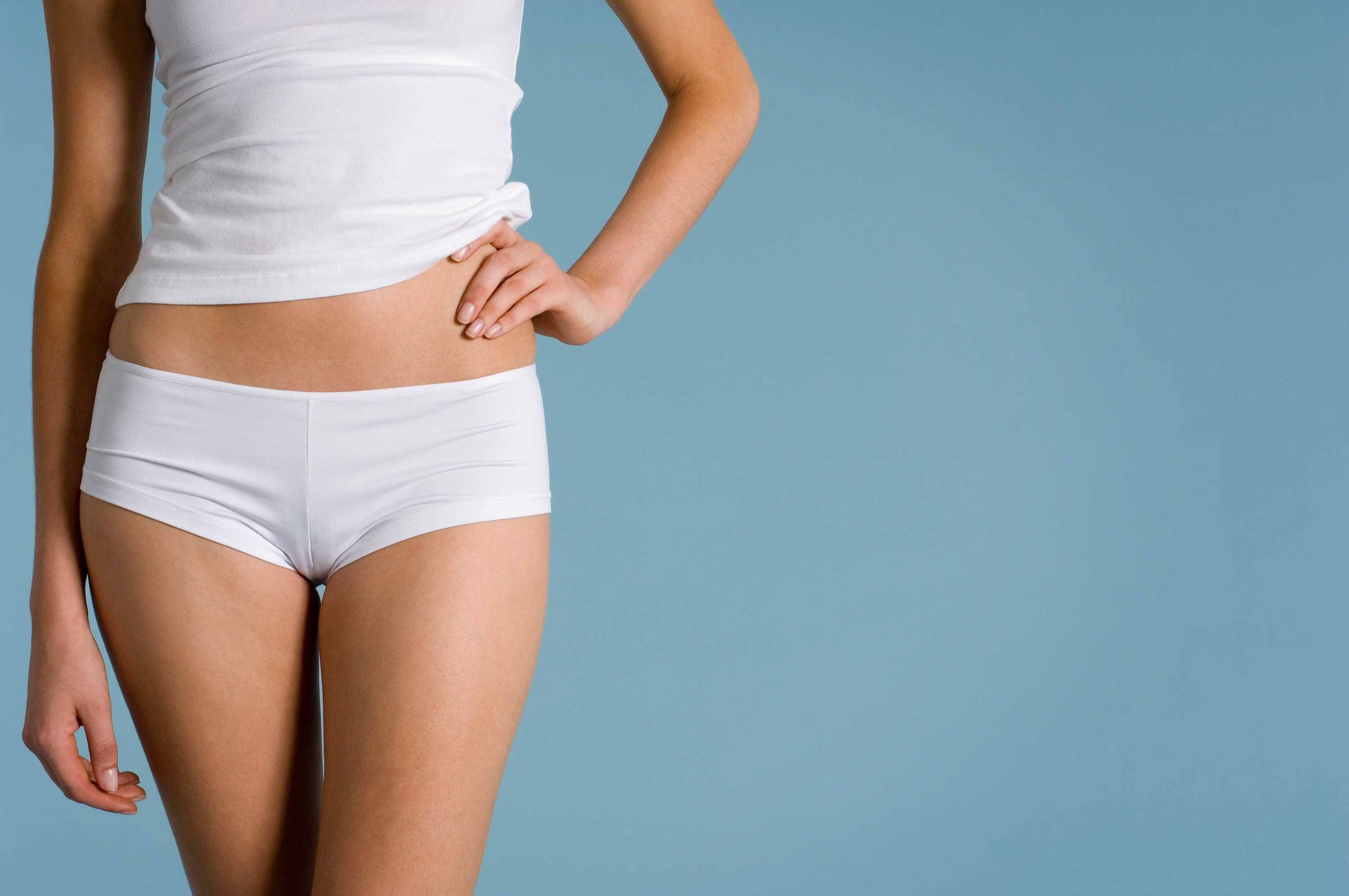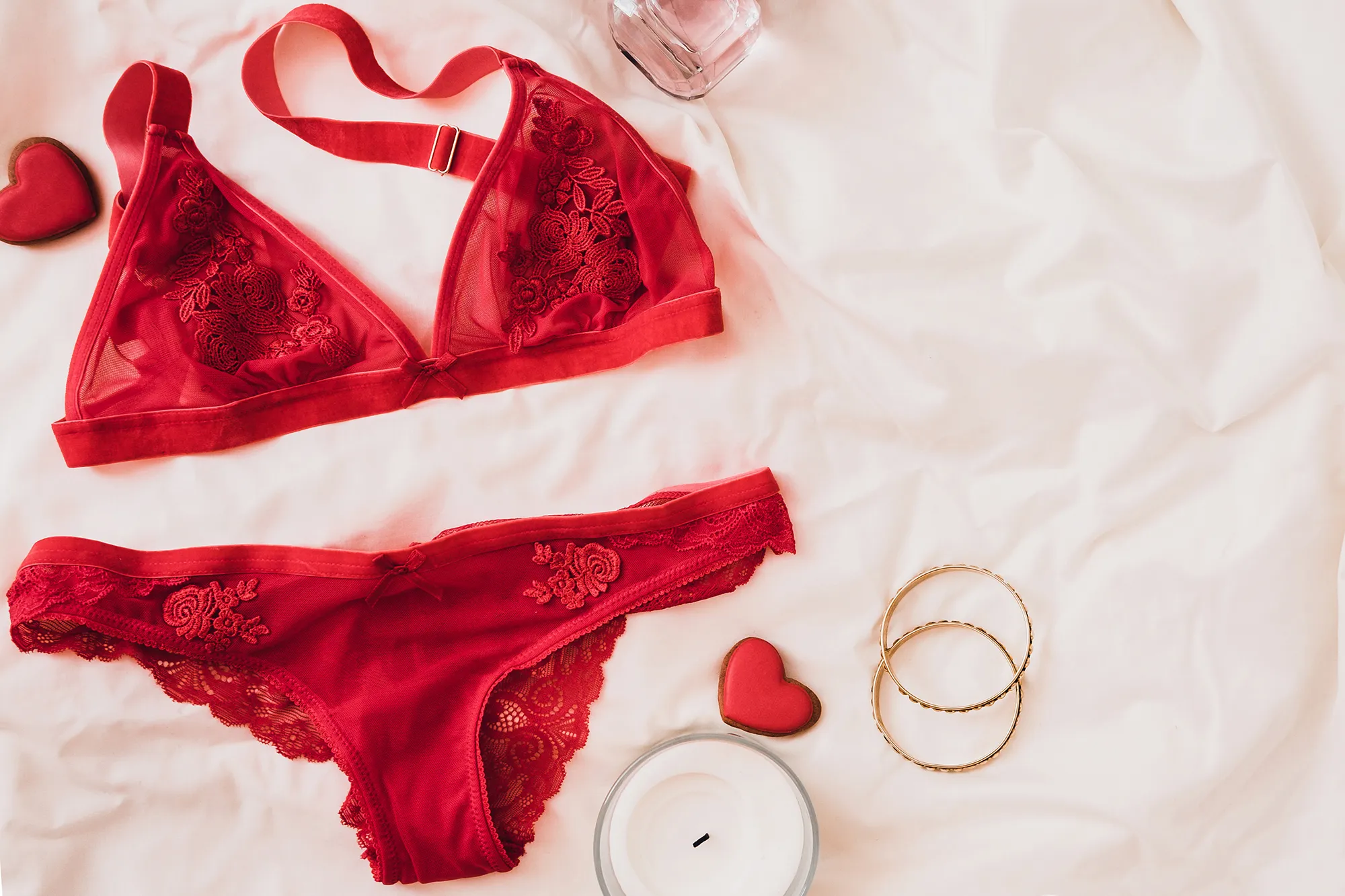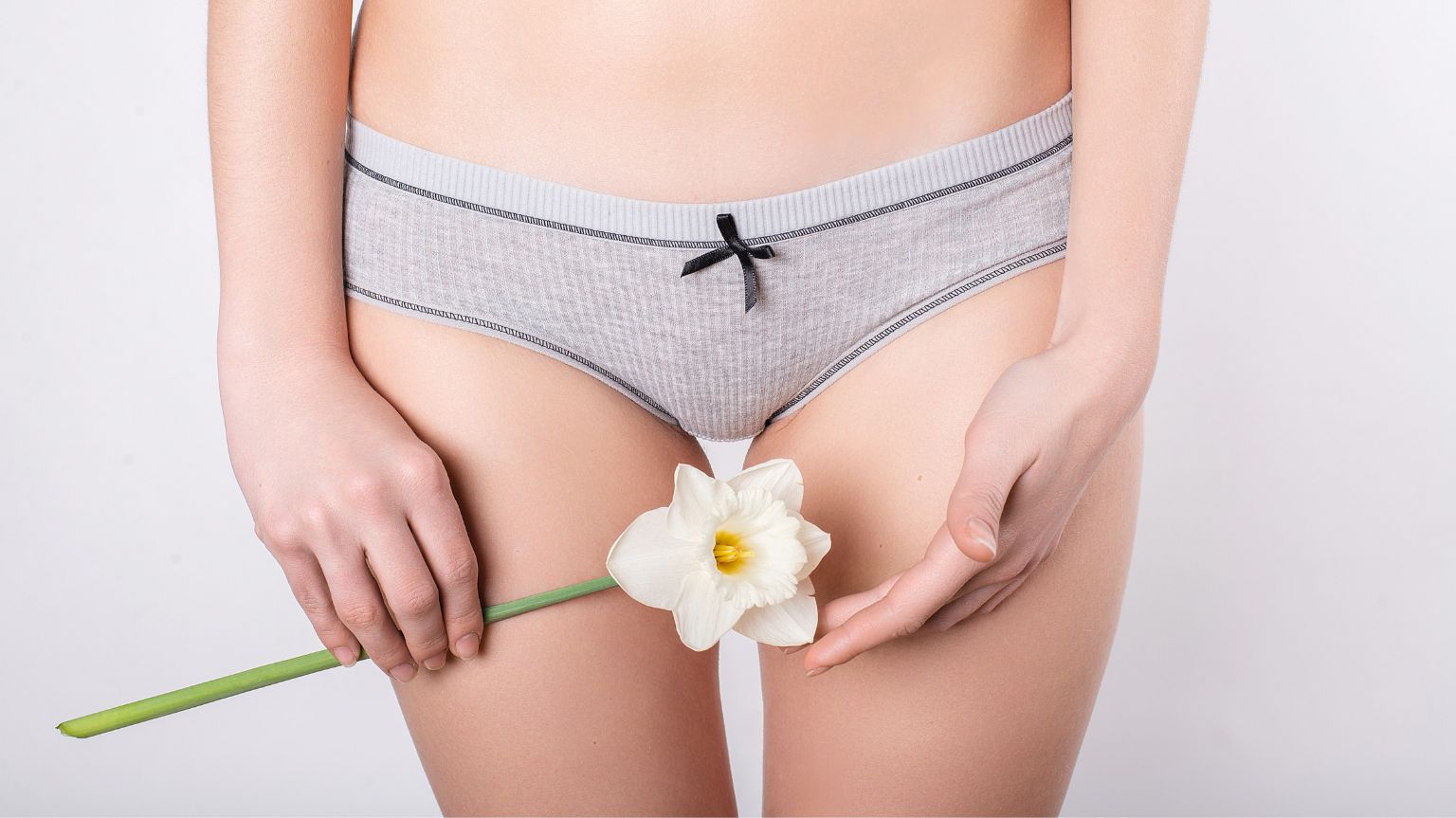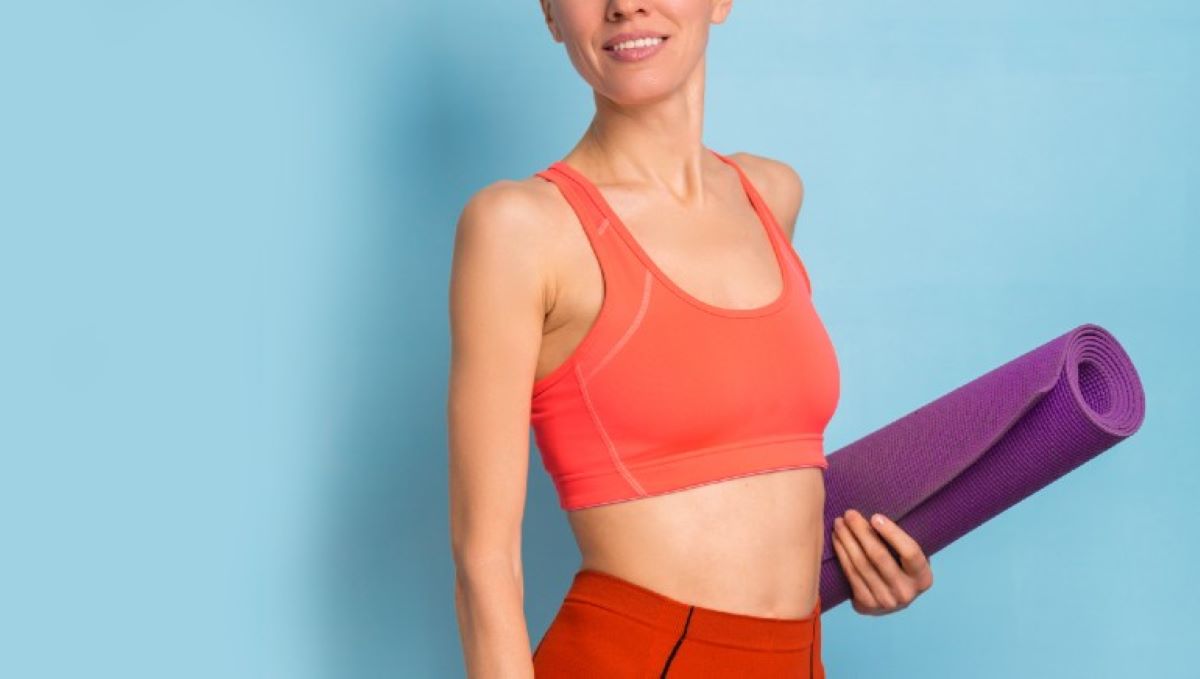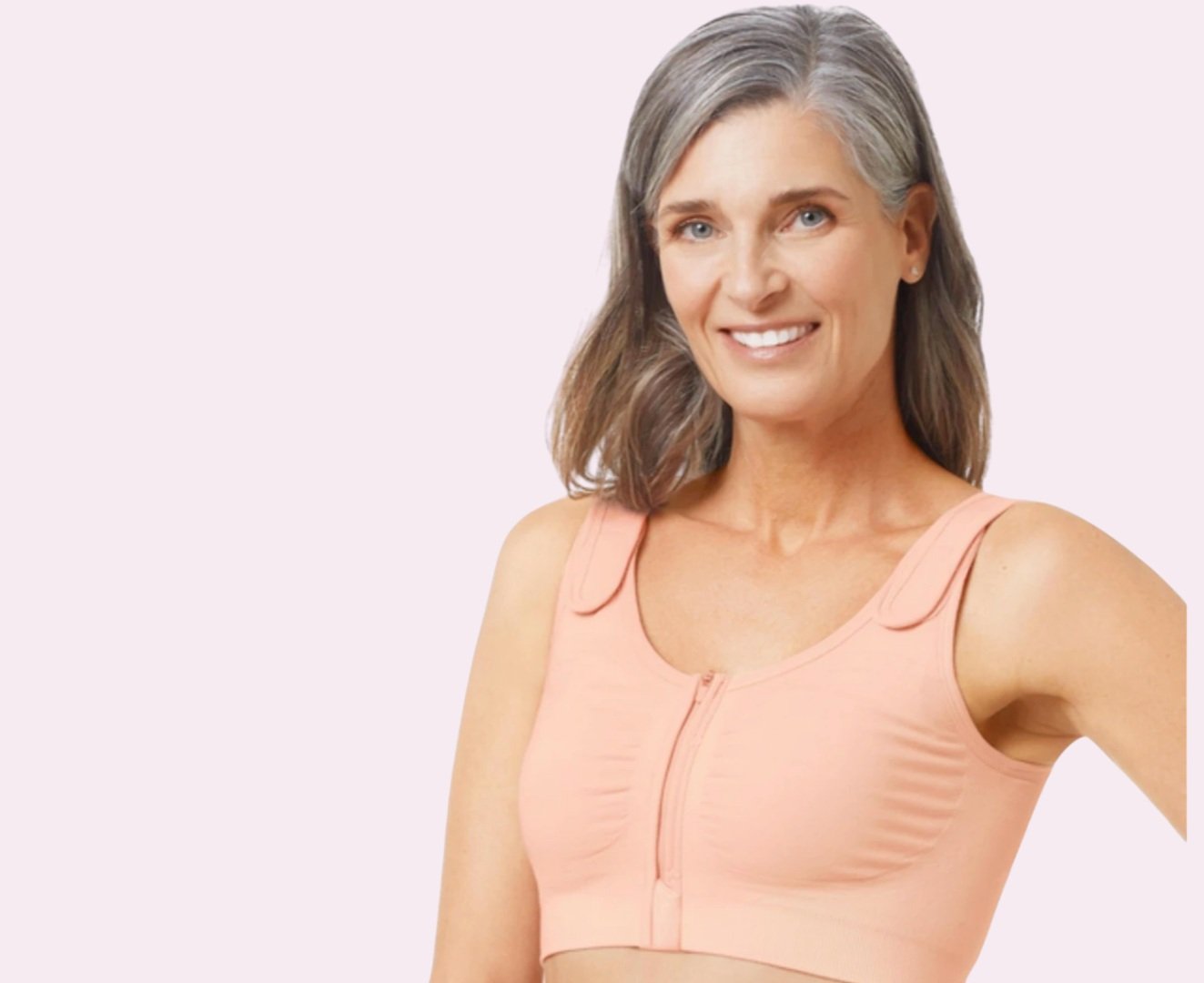Home>Women's Underwear>Bras>What Does Bra Mean
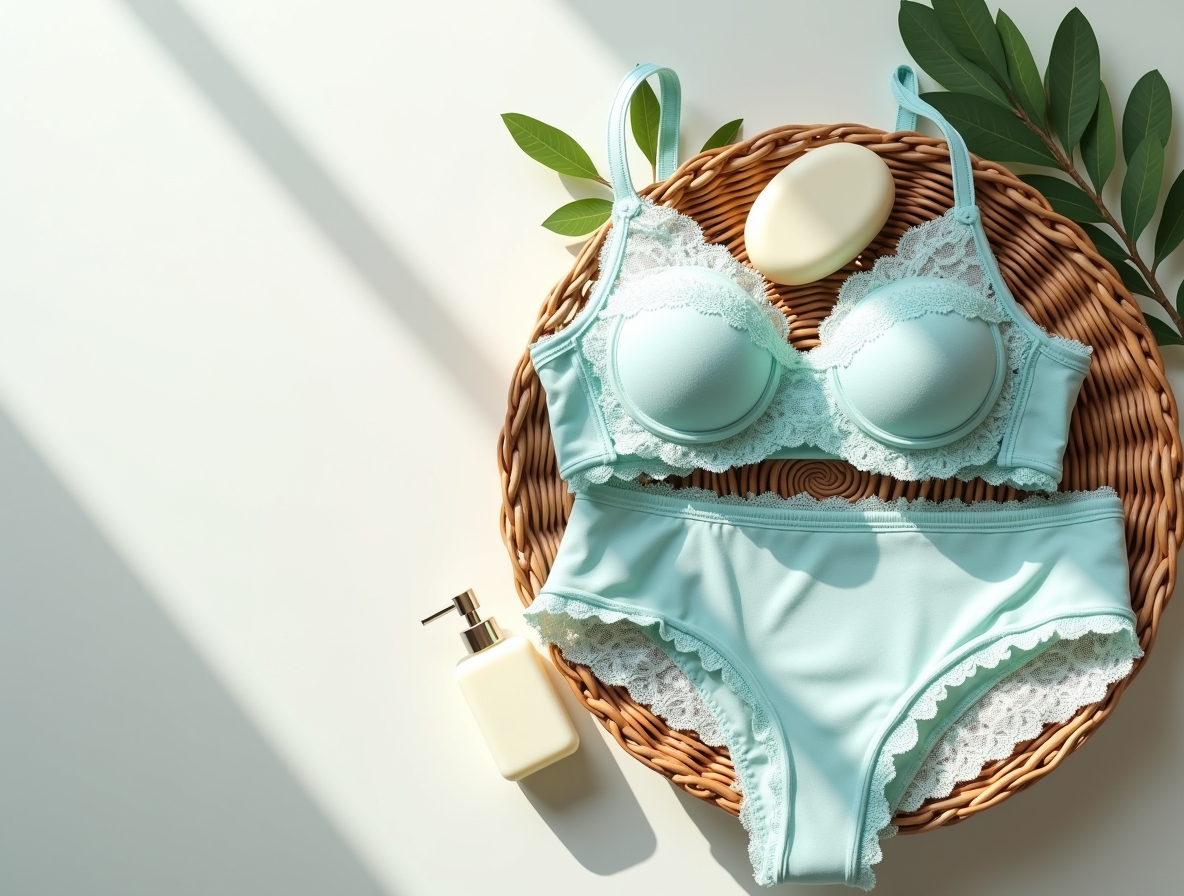

Bras
What Does Bra Mean
Modified: September 23, 2023
Discover the meaning of bras and why they are an essential part of women's wardrobe. Explore different types, styles, and benefits of bras for ultimate comfort and support.
(Many of the links in this article redirect to a specific reviewed product. Your purchase of these products through affiliate links helps to generate commission for Under-tec.com, at no extra cost. Learn more)
Table of Contents
Introduction
Bras have become an essential part of our daily wardrobes, offering support, comfort, and style to women worldwide. They are more than just undergarments; they represent a symbol of femininity and empowerment. But what exactly is a bra?
A bra, short for brassiere, is a specialized garment designed to support and shape a woman’s breasts. It typically consists of two cups to enclose each breast, connected by a band that wraps around the torso. Bras can be made from a variety of materials, including cotton, lace, satin, and synthetic blends. They come in various styles, sizes, and colors to cater to different body types and personal preferences.
The history of the bra dates back centuries, with the invention of breast-binding garments in ancient civilizations. However, it wasn’t until the late 19th century that the modern brassiere as we know it today emerged. Since then, bras have undergone significant transformations, reflecting changes in fashion trends, social norms, and technological advancements.
Definition of Bra
A bra is a garment designed to provide support, shape, and coverage to a woman’s breasts. It is typically made with fabric cups that encase each breast and a band that wraps around the torso. The cups are often reinforced with underwires or padding to enhance support and create a desired silhouette.
The primary purpose of a bra is to offer support to the breasts, preventing sagging and discomfort. By providing lift and shaping, bras help maintain the natural contour of the breasts while reducing strain on the surrounding muscles and ligaments. Additionally, bras can create a more flattering silhouette under clothing, enhancing a woman’s confidence and self-esteem.
Bras come in a variety of styles, each designed to cater to different needs and preferences. Some common types include push-up bras, which lift and enhance cleavage; sports bras, which minimize breast movement during physical activities; and bralettes, which offer a more relaxed and comfortable fit.
When choosing a bra, it is important to consider factors such as breast size, desired level of support, and personal style. Proper fit is crucial, as an ill-fitting bra can cause discomfort, digging into the skin, and even lead to health issues such as back and neck pain.
Overall, the definition of a bra encompasses both functional and aesthetic aspects, providing women with the comfort, support, and confidence they need throughout their daily lives.
History of the Bra
The history of the bra can be traced back to ancient civilizations, where women used various methods of breast support. In ancient Greece, for example, women would fasten bands around their breasts to provide support and minimize movement during physical activities.
However, it wasn’t until the late 19th century that the modern bra as we know it today began to take shape. In 1889, French corset-maker Herminie Cadolle introduced the first bra-like garment, called the “corselet gorge”, which separated the breasts and provided more freedom of movement than traditional corsets.
Shortly after, in 1907, the term “brassiere” was coined by American Mary Phelps Jacob, who patented a design made from handkerchiefs and ribbons. This innovative undergarment, known as the “backless brassiere”, revolutionized women’s undergarments and marked the beginning of the modern bra era.
Throughout the 20th century, various inventions and advancements further shaped the evolution of bras. In the 1920s, the “flapper” style became popular, which celebrated a more youthful and liberated attitude. This led to the development of bandeau-style bras, designed to flatten the chest and create a more androgynous figure.
In the 1940s, with the onset of World War II, bras became more utilitarian due to fabric rationing. The conical shape, known as the “bullet bra“, emerged as a popular style during this time. However, the post-war period saw a shift towards a more feminine and curvy silhouette, with bras featuring padded cups and underwires for enhanced support and shaping.
Since then, bras have continued to evolve to meet the changing needs and fashion trends of women. The rise of feminism in the 1960s and 1970s led to a push for more comfortable and natural-looking bras, resulting in the popularity of softer, wire-free designs.
In recent years, advancements in technology and materials have allowed for the development of bras that provide both support and comfort. High-tech fabrics, adjustable straps, and innovative designs have made bras more customizable and adaptable to individual needs.
Today, bras have become a staple in women’s wardrobes, offering a blend of functionality, fashion, and self-expression. The history of the bra is a testament to the ever-changing landscape of women’s undergarments, reflecting societal shifts and the pursuit of comfort and empowerment.
Types of Bras
Bras come in a wide variety of styles, each designed to cater to different needs, preferences, and outfits. Understanding the different types of bras available can help you find the perfect fit and functionality for any occasion. Here are some of the most common types of bras:
- T-shirt Bra: A t-shirt bra is a seamless, lightly padded bra that provides a smooth and rounded shape under fitted tops. It is designed with invisible seams and does not have any embellishments, making it ideal for everyday wear.
- Push-up Bra: A push-up bra is designed to lift the breasts and enhance cleavage. It typically features padded cups and sometimes has built-in underwire for added support.
- Balconette Bra: Also known as a shelf bra, a balconette bra lifts the breasts to create a fuller, rounded shape while exposing the top half of the breasts. It is often designed with wide-set straps, making it ideal for low-cut or square-neckline tops.
- Sports Bra: A sports bra is specifically designed to minimize breast movement during physical activities. It offers maximum support and often features compression and moisture-wicking properties to keep you comfortable and dry.
- Strapless Bra: As the name suggests, a strapless bra does not have shoulder straps, making it suitable for outfits that expose the shoulders and back. It is designed with special grip panels and underwire to provide support and prevent slippage.
- Convertible Bra: A convertible bra has detachable straps that can be rearranged in multiple ways to accommodate different outfits. It can be worn as a regular bra, halter neck, cross-back, or one-shoulder style.
- Plunge Bra: A plunge bra has a deep V-neckline, making it ideal for low-cut tops and dresses. It provides lift, shaping, and support while creating a sexy and flattering cleavage.
- Bralette: A bralette is a soft, wire-free bra that offers minimal support. It is typically made with lace or other delicate fabrics and is designed for comfort and a more relaxed fit.
These are just a few examples of the wide range of bras available in the market. It’s important to explore different styles and find the ones that suit your body shape, preferences, and the occasion at hand. Remember, a well-fitting and appropriate bra can enhance your comfort, confidence, and overall outfit.
Purpose of Bras
Bras serve several important purposes, catering to both practical and aesthetic needs. Understanding the purpose of wearing a bra can help you make informed choices about the types of bras you wear and when to wear them. Here are some key reasons why bras are worn:
- Support: One of the primary purposes of a bra is to provide support to the breasts. The breasts contain no muscles, and without proper support, they can sag over time, causing discomfort and potential health issues. A well-fitted bra helps distribute the weight of the breasts, reducing strain on the back and preventing premature sagging.
- Shape and Definition: Bras play a role in shaping and defining the breasts, enhancing their appearance. They can lift and separate the breasts, creating a more youthful and attractive silhouette. Different styles of bras can help accentuate or minimize the appearance of cleavage, depending on personal preferences and the desired look for different outfits.
- Modesty and Coverage: Bras provide a layer of coverage to help maintain modesty and prevent nipples from showing through clothing. This is particularly important when wearing lightweight or sheer fabrics that can be revealing. Bras also help prevent the appearance of bra lines or bulges under clothing, ensuring a smooth and seamless look.
- Comfort and Confidence: Wearing a well-fitting bra can greatly improve comfort throughout the day. It provides support and reduces discomfort caused by breast movement, especially during physical activities. Additionally, the right bra can boost confidence, making you feel more secure and self-assured in your appearance.
- Fashion and Style: Bras have evolved to become a fashion statement, offering a wide range of styles, designs, and colors to suit personal preferences and fashion trends. From everyday bras that provide practical support to more intricate and decorative bras for special occasions, they can be a reflection of personal style and a way to express individuality.
It is important to note that while bras have their benefits, personal comfort should always be a priority. Some individuals may choose to forgo bras altogether or opt for more comfortable alternatives like bralettes or wireless bras. Ultimately, the purpose of wearing a bra is to enhance comfort, support, and confidence, while also embracing personal style and preferences.
Importance of Wearing Bras
Wearing a bra has significant benefits for women in terms of both physical and emotional well-being. While personal preferences and comfort vary, understanding the importance of wearing bras can help individuals make informed choices about their undergarments. Here are some key reasons why wearing bras is important:
- Support and Comfort: One of the primary reasons for wearing a bra is to provide support and enhance comfort. The breasts consist of delicate ligaments and tissues that can undergo strain due to their weight. A properly fitting bra can provide necessary support and relieve pressure, especially during physical activities or for women with larger breasts.
- Posture and Spinal Health: Wearing a bra that provides adequate support can also contribute to maintaining good posture and spinal health. A bra that lifts the breasts can help align the spine by distributing weight evenly and reducing strain on back muscles, preventing slouching and potential long-term back problems.
- Breast Shape and Preservation: Wearing a bra can help preserve the natural shape of the breasts. Gravity and age can lead to breast sagging over time, but a good bra can provide lift and prevent excessive stretching of the breast tissue. This helps maintain a youthful appearance and reduces the risk of premature sagging.
- Confidence and Body Image: Wearing a bra that fits well and supports the breasts can have a positive impact on a woman’s self-confidence and body image. It can provide a sense of security and enhance the overall appearance of clothing, boosting self-esteem and allowing individuals to feel more comfortable and confident in their daily lives.
- Stress Reduction and Activity Comfort: For women who engage in physical activities, wearing a sports bra is crucial. Sports bras minimize breast movement during exercise, preventing discomfort, pain, and potential damage to the breast tissue. This allows women to participate in physical activities with confidence and a greater range of motion.
- Breast Health Awareness: Wearing a bra regularly can also contribute to breast health awareness. During regular bra-wearing, women become more familiar with their breasts’ normal appearance and texture, making it easier to detect any changes or abnormalities that may warrant further medical attention.
While the importance of wearing bras is evident, it is essential to note that individual comfort and personal choices should ultimately guide bra-wearing habits. Some women may prefer wireless or bralette-style options for increased comfort, while others may opt not to wear bras at all. The key is to find a balance between personal comfort and reaping the benefits that wearing bras can provide.
Common Misconceptions about Bras
Despite being a staple in women’s wardrobes, there are several misconceptions and myths surrounding bras. These misconceptions often lead to confusion and incorrect beliefs about what bras can and cannot do. Here are some of the most common misconceptions about bras:
- Myth: Wearing a bra causes breast cancer. This is a widely spread myth with no scientific evidence. Wearing a bra does not increase the risk of breast cancer. In fact, bras provide support and can even help with early detection by allowing women to notice changes in their breast tissue more easily.
- Myth: Sleeping in a bra prevents sagging. There is no scientific evidence to prove that wearing a bra while sleeping prevents breast sagging. In fact, it is recommended to give the breasts a break from bras during sleep to promote better circulation and overall breast health.
- Myth: Wearing a bra can stop breast growth. The growth of breasts is determined by genetics and hormones, not by wearing a bra. Bras do not restrict breast growth or development in any way.
- Myth: All bras with underwire are uncomfortable. While some ill-fitting bras with underwire may cause discomfort, there are many well-designed bras with underwire that provide excellent support and comfort. The key is to find the right size and style that suits your body shape and preferences.
- Myth: Once you find your bra size, it stays the same. Bra sizes can change over time due to factors like weight fluctuations, hormonal changes, and aging. It is important to get measured regularly and ensure that you are wearing the correct size for optimal comfort and support.
- Myth: The tighter the bra, the better the support. Wearing a bra that is too tight can actually be counterproductive and uncomfortable. A properly fitting bra should feel snug but not overly tight, providing adequate support without digging into the skin.
It is essential to question and debunk these misconceptions to have a better understanding of bras. The key is to find the right bra style, size, and fit that suits your individual needs and preferences. Consulting with a professional bra fitter and staying informed about the latest research and recommendations can help dispel these myths and ensure that you make the best choices for your breast health and comfort.
Bra Sizing and Measurements
Proper bra sizing is crucial for optimal comfort, support, and overall fit. However, many women are wearing the wrong size without even realizing it. Understanding how to measure for the correct bra size can make a significant difference in the way a bra fits and feels. Here are the key steps to measure for bra sizing:
- Band Measurement: Using a soft measuring tape, measure around your rib cage just under your bust. Make sure the tape is snug, but not too tight. Round the measurement to the nearest whole number. This measurement will determine your band size.
- Bust Measurement: Measure around the fullest part of your bust, making sure the tape is parallel to the ground. Again, the measurement should be snug, but not too tight. Round the measurement to the nearest whole number.
- Cup Size Calculation: Subtract your band measurement from your bust measurement. Use the difference to determine your cup size using a bra size chart. Each inch of difference corresponds to a cup size. For example, if the difference is 1 inch, your cup size would be A. If the difference is 2 inches, the cup size would be B, and so on.
- Try Different Sizes: It is important to try on bras in different sizes to find the best fit, as sizing can vary between brands and styles. Pay attention to how the band feels around your torso, the cups’ coverage and support, and the straps’ adjustability.
It is worth noting that bra sizing is not a one-size-fits-all approach. Different brands and styles may fit differently, so it is important to try on various sizes and styles to find what works best for you. Additionally, factors such as pregnancy, weight fluctuations, and changes in hormone levels can affect bra size, so regular re-measuring is recommended.
Getting a professional bra fitting done by a trained specialist can also be helpful, as they have experience and knowledge in finding the right size and style for individual body shapes and preferences. They can provide personalized recommendations and ensure the best fit for maximum comfort and support.
How to Choose the Right Bra
Choosing the right bra is essential for comfort, support, and confidence. With so many options available, finding the perfect bra can feel overwhelming. However, by considering a few key factors, you can navigate the bra-shopping process with ease. Here are some tips on how to choose the right bra:
- Know Your Measurements: Understanding your band size and cup size is crucial in finding the right fit. Take accurate measurements of your underbust and bust to determine your size, and refer to a bra size chart for guidance.
- Consider Your Body Shape: Different bra styles are designed to accommodate various body shapes. For example, if you have a fuller bust, consider bras with fuller coverage and sturdy straps for added support. If you have a smaller bust, you may opt for bras with padding or push-up styles to enhance your natural shape.
- Understand Your Needs: Consider your lifestyle and the activities you engage in regularly. If you are active, invest in sports bras that provide excellent support and minimize breast movement. If you need a bra for daily wear, choose comfortable yet supportive styles that can be worn throughout the day.
- Try Different Styles: Experiment with different bra styles to find what works best for you. Consider factors such as the shape of the cups, the presence or absence of underwire, the strap style, and the closure type. Trying different styles allows you to discover what feels most comfortable and suits your body shape.
- Check the Fit: When trying on a bra, make sure the band sits snugly around your rib cage without digging in. The cups should fully enclose your breasts without any spillage or gaps. The straps should be adjustable and provide enough support without digging into your shoulders.
- Comfort is Key: Above all, prioritize comfort when choosing a bra. Pay attention to the fabric, underwire, padding, and any other elements that may affect comfort. Look for bras with soft materials, wide straps, and a design that won’t cause irritation or discomfort during prolonged wear.
Remember, finding the right bra may require some trial and error. Don’t be afraid to try on multiple sizes and styles to find the perfect fit. Consider seeking professional bra fitting services for expert advice tailored to your specific needs and body shape. The right bra can make a world of difference in terms of comfort, support, and confidence.
Proper Bra Care and Maintenance
Caring for your bras properly can significantly extend their lifespan and ensure they continue to provide reliable support and comfort. Here are some essential tips for maintaining and caring for your bras:
- Rotate Between Bras: To prevent excessive wear and tear, it is advisable to rotate between multiple bras. By rotating your bras regularly, you give them time to recover their shape and elasticity, making them last longer.
- Hand Wash or Use a Delicate Cycle: Bras are delicate garments, and it is best to hand wash them to preserve their shape and fabric. If using a washing machine, place the bras in a mesh garment bag and use a delicate cycle with cold water. Avoid using bleach or harsh detergents, as these can damage the fabric and elastic.
- Avoid Machine Drying: Heat can be damaging to bras, so it is best to air dry them. After gently reshaping the cups, hang your bras to dry in a well-ventilated area. Avoid direct sunlight, as it can cause fading and discoloration.
- Store Them Properly: To maintain the shape of your bras, store them in a way that prevents excessive stretching or bending of the cups. Stack them neatly in a lingerie drawer or hang them on a bra hanger to prevent distortion.
- Fasten Hooks and Adjust Straps: Before washing or storing your bras, always make sure to fasten hooks and adjust straps to prevent them from tangling or snagging on other garments.
- Handle with Care: When putting on or taking off your bras, handle them gently to avoid stretching or damaging the fabric or underwire. Avoid pulling or tugging forcefully, especially when adjusting straps or band closure.
- Follow Care Instructions: Different bras may have specific care instructions, so it’s important to check the garment tags for any specific recommendations from the manufacturer. Some bras may require hand washing only or have temperature restrictions, so be sure to follow the instructions provided.
By following these tips for proper bra care and maintenance, you can help preserve the quality, shape, and functionality of your bras. By treating your bras with care and giving them the attention they deserve, you can enjoy the benefits of wearing comfortable and supportive bras for a longer period.
The Future of Bras
The world of bras is continuously evolving as fashion, technology, and societal trends shift. With advancements in materials, innovations in design, and changing attitudes towards body image, the future of bras holds exciting possibilities. Here are some potential developments that may shape the future of bras:
- Customized Fit: With the rise of technology, we can expect to see more personalized bra fitting experiences. Virtual fitting tools, body scanning technology, and machine learning algorithms may be utilized to create bras tailored to individual body shapes and preferences.
- Wireless Technology: As wireless bras gain popularity, we may see further advancements in wireless technology. Innovations in fabric construction and supportive materials can make wireless bras even more comfortable and supportive, challenging the notion that wired bras provide superior lift and shaping.
- Sustainable Materials: The fashion industry as a whole is moving towards more sustainable practices, and bras are no exception. We can anticipate the use of eco-friendly fabrics, recycled materials, and lower impact manufacturing processes, allowing for more sustainable and environmentally conscious choices.
- Inclusive Size Range: The demand for inclusive sizing continues to rise. In the future, we may see an expansion of bra sizes to accommodate a broader range of body types, ensuring that all individuals have access to well-fitting and supportive bras.
- Adaptive and Versatile Designs: As people seek versatile undergarments, bras may become more adaptable to different outfit styles and activities. Interchangeable straps, convertible designs, and multi-functional features may become more commonplace.
- Fashion-Forward Aesthetics: Bras as fashion statements are here to stay. Future bras may incorporate more innovative and fashion-forward designs, ranging from intricate embellishments to creative patterns and prints, allowing wearers to express their individual style.
- Increased Focus on Comfort: Comfort continues to be a priority for bra wearers. In the future, bras may incorporate more breathable fabrics, adjustable features, and seamless construction, ensuring maximum comfort without compromising support.
These are just a few potential trends and developments that could shape the future of bras. As women’s needs and preferences evolve, the industry will continue to innovate and adapt to meet those demands. The future of bras holds promising advancements that prioritize comfort, sustainability, inclusivity, and individual expression.
Conclusion
Bras hold a significant role in women’s lives, providing support, comfort, and a sense of confidence. From their inception as functional undergarments to their evolution as fashion statements, bras have come a long way. Understanding the different types of bras, the importance of wearing them, and how to choose the right one can greatly enhance your overall experience.
Proper care and maintenance of bras ensure that they remain in good condition, prolonging their lifespan and effectiveness. As we look to the future, we can expect further advancements in bra technology, including personalized fittings, sustainable materials, and versatile designs.
Regardless of the changes and developments in the world of bras, it is crucial to prioritize comfort, support, and individual preferences. Remember to focus on finding the right fit, exploring different styles, and embracing personal style and confidence.
Ultimately, bras continue to play a vital role in women’s lives, offering much more than just functional support. They are a symbol of femininity, self-expression, and empowerment. By understanding the nuances of bras, we can make informed choices and celebrate the diverse options available to us.
